Your cart is currently empty!
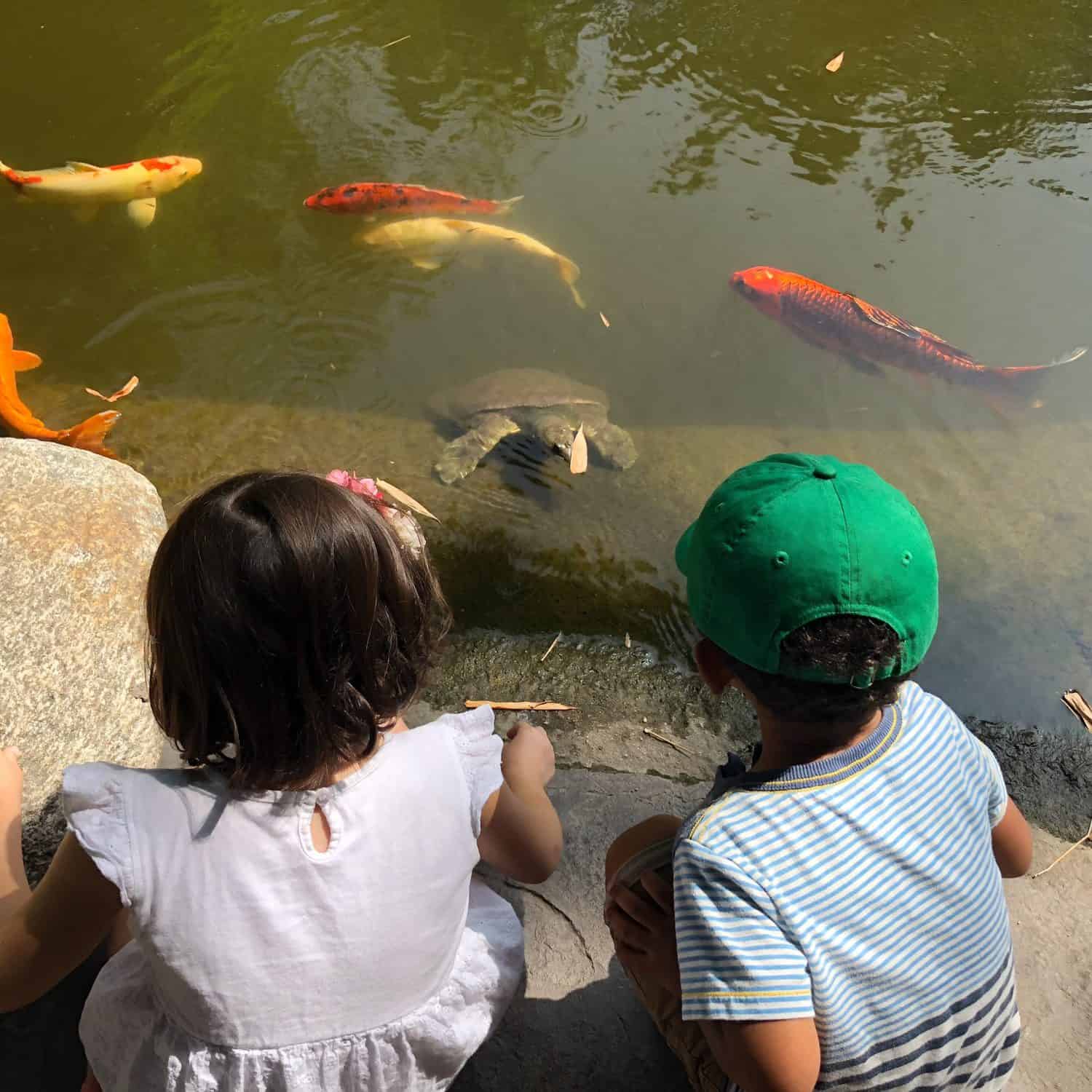
Outdoor Etiquette & Nature Manners for Kids
If you’re raising outdoor-loving kids, chances are that you’re also teaching your kids outdoor etiquette (whether you know it or not). Nature manners are a set of rules that help kids understand how to treat outdoor spaces, the environment, and wildlife. They’re practices that help us show respect to our planet and our fellow outdoor adventurers. Today, Creative Team member Michelle Garrett, California mom, and creator of Wonder Club Explorers, is here with some guidance for parents about teaching outdoor etiquette to kids and seven easy nature manners to teach your little nature-lovers.
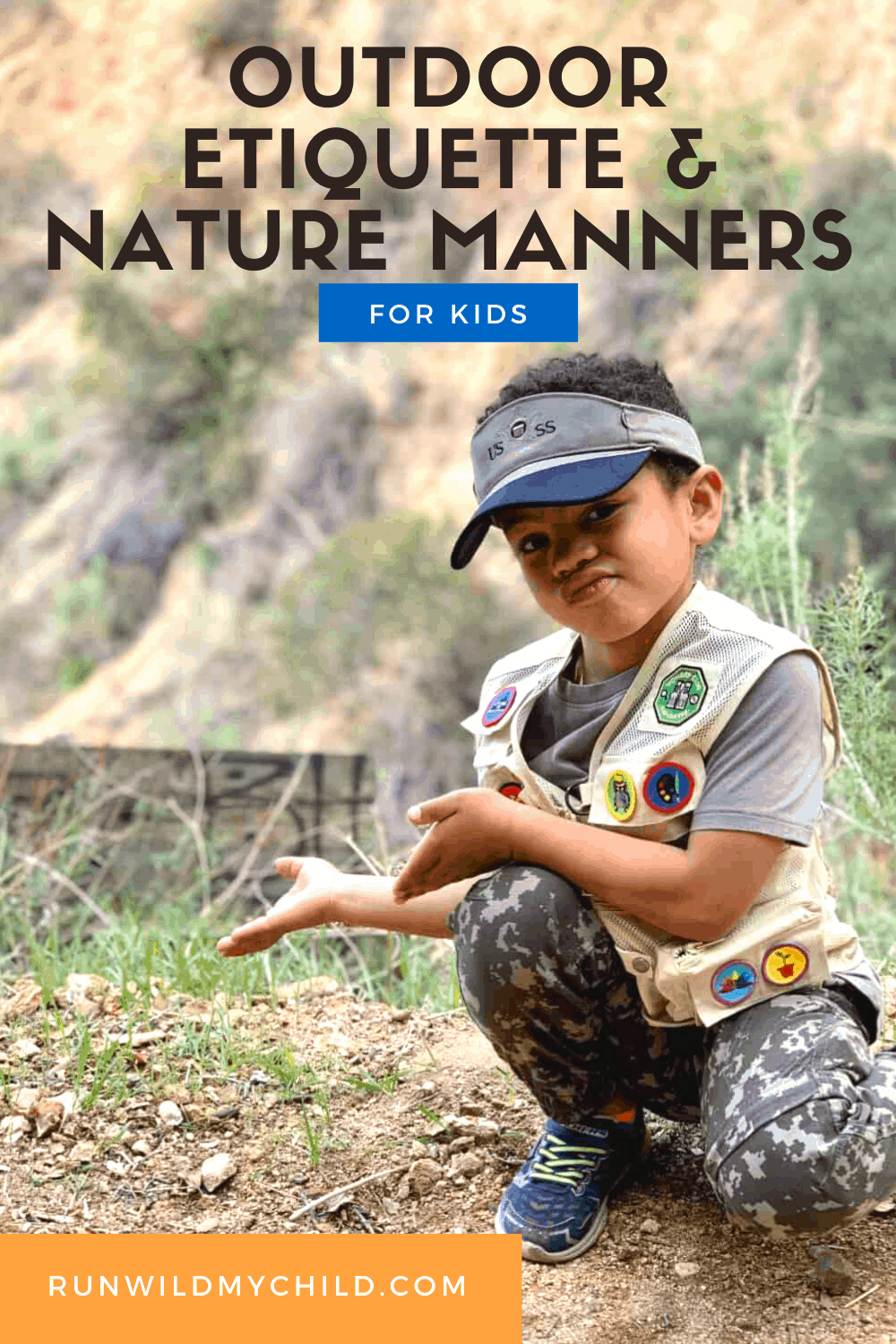
Outdoor etiquette and nature manners
Our littles have a great big world waiting for them to explore. With a little help from us grown-ups, we hope they will grow to love and appreciate all the joys that nature has to offer. For many, nature’s benefits include the serenity that comes from being outdoors, breathing in the fresh air, or feeling the sunshine on one’s face. Being outdoors also affords nature-goers the wonderful pleasure of meeting other kindred spirits who, too, enjoy being outside.
One of the benefits of spending time in nature is the opportunity to teach children how to be good stewards of the outdoors. Whether the mountains are calling or the beaches are beckoning, there is a certain set of etiquette for the outdoors. We’re not talking Emily Post-style etiquette, but rather a handful of good manners and practices to set in motion while kids are young to help them appreciate and respect nature, as well as preserve the enjoyment of the outdoors for others.
What are nature manners?
Nature manners are a set of rules that help kids understand how to treat outdoor spaces, the environment, and wildlife. They’re practices that help us show respect to our planet and our fellow outdoor adventurers.
Nature manners are equally as important as the ones we learn around the dinner table. Especially if nature is to be enjoyed by everyone. They’re not hard and fast rules that are difficult for kids to grasp or implement. We’re certainly not asking your kids to be quiet outside or stay calm at all times (don’t worry, that’s not our style).
Our nature manners for kids are merely ways to teach kids how to respect and appreciate nature, without doing harm. They’re based on the “Leave No Trace” principles, but adapted for little ones.
7 easy nature manners for outdoor-loving kids
Today, we’re sharing seven easy manners to teach your kids when adventuring outside. We hope these easy-to-implement manners will help to raise awareness and decrease frustrations when we are out enjoying our beautiful outdoor spaces together. These concepts are all practices that we can teach our kids through modeling and with gentle reminders when we’re out and about in nature. They’ll pick up on these nature manners quickly and they’ll become second nature to them as they grow into nature-loving adults.
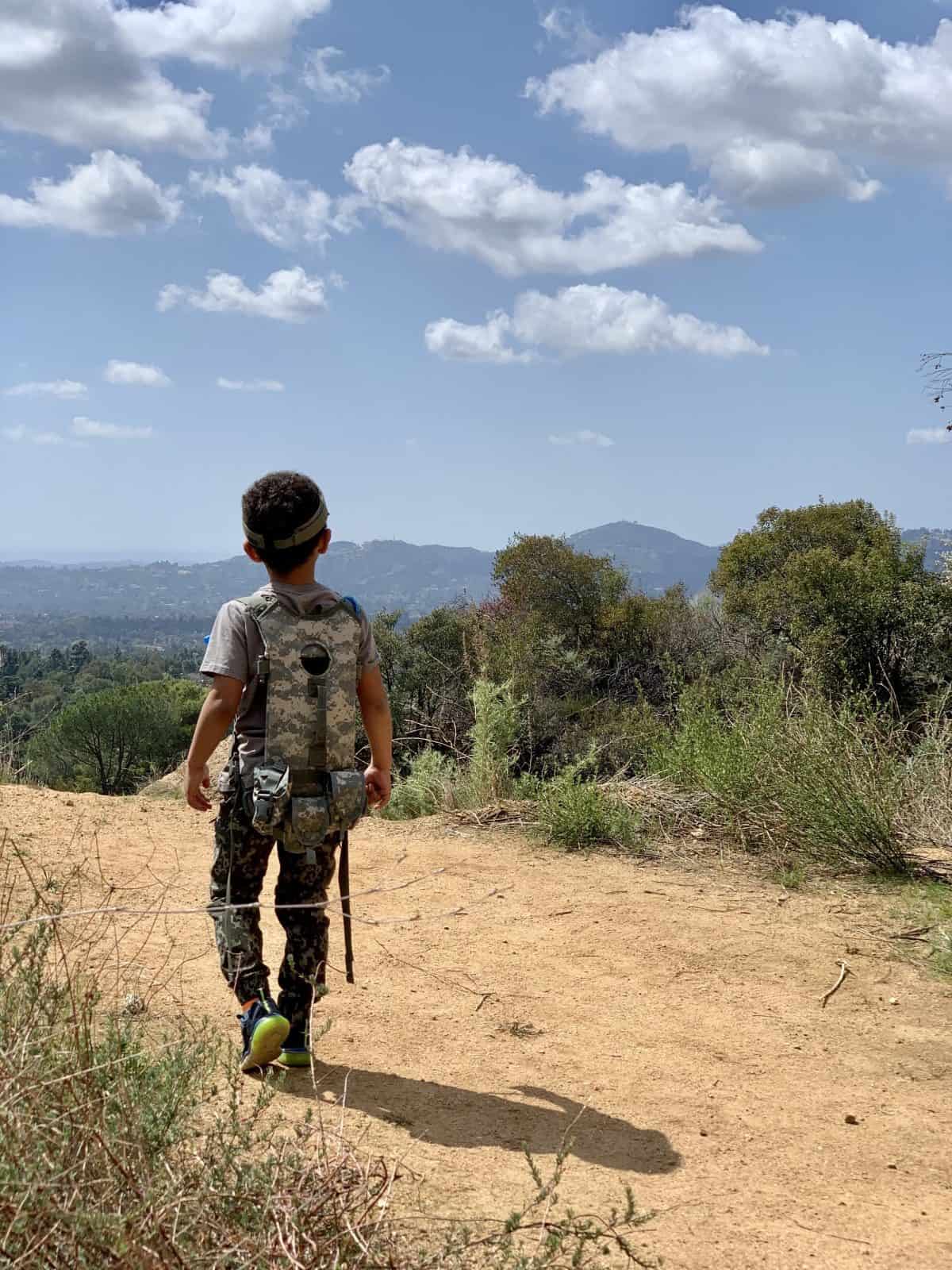
1. Give a hoot, don’t pollute!
Woodsy the Owl said it best, “Give a hoot, don’t pollute!” Teaching kids to properly dispose of their trash – food wrappers, juice boxes, and bottles – is one of the easiest manners to teach kids. Trash has no place along trails, waterways, and oceans. Not only does trash not look nice, but it is also harmful to native flora and fauna.
One of the best ways to prevent littering is to teach kids the “pack in, pack out” mindset. On your next adventure, carry along a grocery bag and stuff it with all of your trash. This includes food scraps and toilet paper. When the adventure is over, ask your little one to toss it into a trash can so they know how to dispose of it for next time.
And if you want to go a bit above and beyond and really teach amazing outdoor etiquette, teach your child to practice “negative trace” where they also pick up the trash and litter others have left behind. Leaving an outdoor area even better than you found is one of the best things you can do for our planet and a wonderful concept to teach kids.
2. Just say no to graffiti
Kids are natural artists, but we certainly don’t want to encourage them to leave their mark on nature in a damaging way. On our family hikes, we would often let our son grab a stick and draw zigzags and numbers in the dirt along the trails. But, when we came upon graffiti carved into trees or painted on rocks and signs, we made sure to point out that it was destroying the natural beauty of the trails we all enjoyed.
No one wants to see spray paint or carvings when they’re outside enjoying nature. Graffiti and vandalism have a permanent impact on beautiful places. Even when it can be cleaned up, the parks don’t always have the resources to take care of it. There are appropriate ways to express selves artistically in nature such as Plein air painting or taking photos, but graffiti sure isn’t one of them!
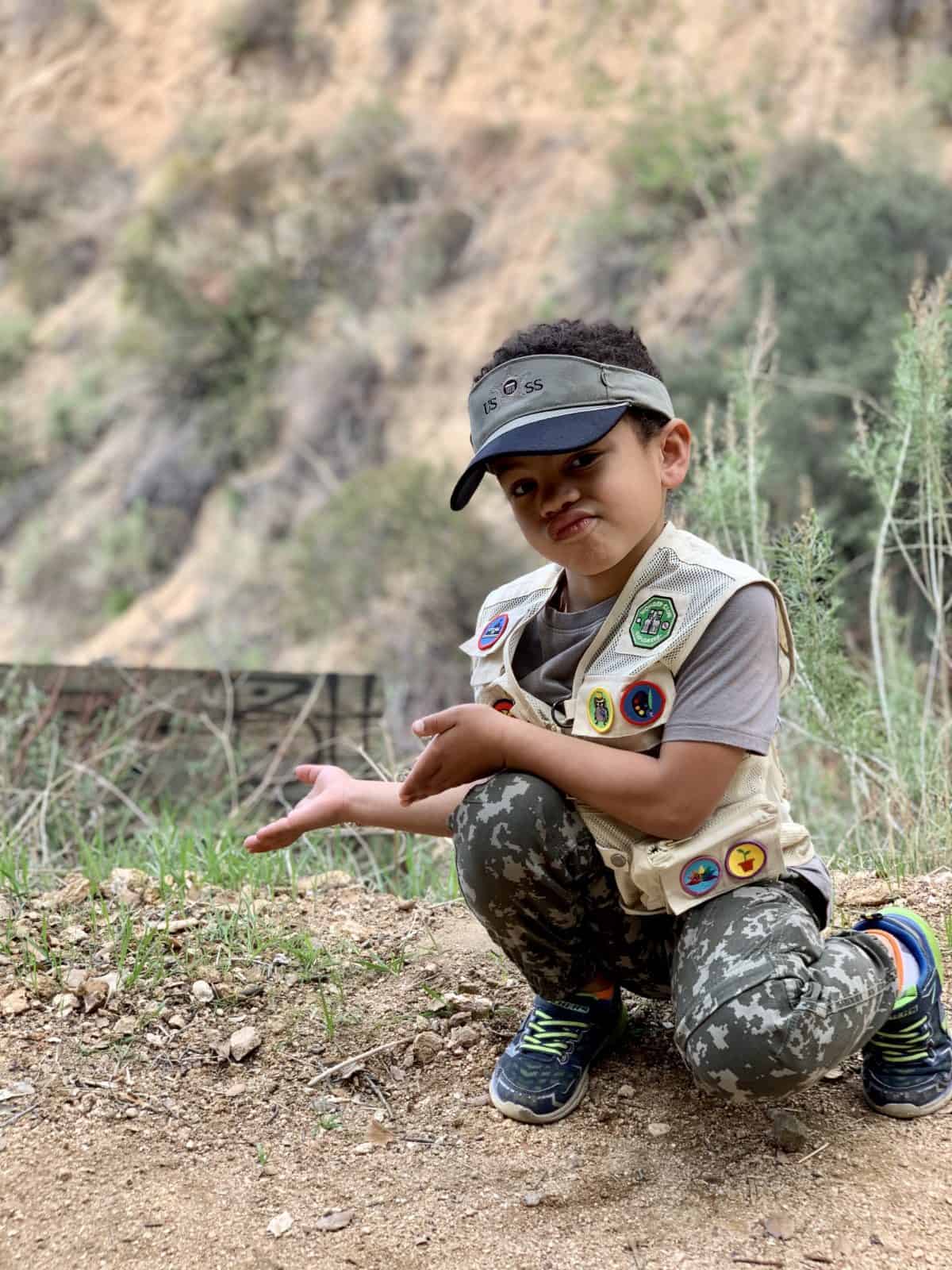
3. Look with your eyes, not with your hands!
How remarkable is it to come across the habitat of an animal in nature? Nests, dens, hives, and other habitats give rare glimpses into the animal kingdom and are the equivalent of a science textbook come to life! Bu animal habitats can be delicate, carefully constructed, and teeming with life. They should be observed with an abundance of caution.
Kids, however, are naturally curious creatures. The lure of touching these habitats is strong. And while we are all about hands-on learning, nevertheless, it’s important to impart respect for our animal friends and teach kids to follow the simple adage, “look with your eyes, and not with your hands” in these instances. There are plenty of other things in nature that kids can touch and experience up-close.
4. You had me at “hello”
One of my favorite nature manners to teach my son is to be friendly and courteous to other outdoor adventurers and nature-goers. By saying hello, smiling, or nodding one’s head, you’re acknowledging another person’s presence without being overbearing or intrusive.
The benefits of engaging in this type of hiking etiquette extend beyond just being warm & friendly. Being courteous gives folks a chance to share potential hazards ahead or landmarks to assist with navigation or distance. Conversation with fellow hikers also makes one more memorable in case a rescue team needs to locate a lost adventurer.
And while it’s really nice to be friendly with your fellow explorers, remember that most people aren’t out there to make new friends or hang out with other people. Say hi and be helpful, but do not monopolize your time or help yourself to another group’s space or resources.

5. Leave it as you found it
The simple, yet effective, phrase “leave it as you found it” speaks to one’s influence in maintaining nature for everyone to enjoy. Some might even say, “leave it better than you found it.” Regardless, don’t do anything to destroy the outdoors. Try not to disturb things and leave items in their natural condition, whether it’s rocks or vegetation.
We all know what happened when Goldilocks explored the home of the three little bears. Had she “left it as she found it,” that particular nursery rhyme would have ended a lot differently.
6. Be mindful where you walk
When you’re out exploring, teach your kids to be mindful of where you walk, sit, put down your bags, and allow your pets. Life outside in nature can be fragile and our missteps can damage it for years to come. When possible, stay on the marked trails and try not to disturb the plants and environment around you. Sometimes this is a hard concept for kids because they’re naturally curious and want to explore. We’re not telling you that you can never go “off trail,” but if/when you do, just be mindful of your steps and your actions to not harm or disturb your surroundings.
7. Show respect for wildlife
It’s important to teach your kids to respect wildlife and wild animals. Don’t feed wild animals or leave food scraps behind. Animals fed by humans may become dependent on that food and have difficulty learning how to fend for themselves in the wild.
For the safety of both kids and animals, keep a safe distance from wild animals. Animals need privacy (particularly during breeding seasons) and can be very protective when approached. A good rule of thumb is, actually using your thumb: close one eye, and then if you hold your thumb up to your open eye and can cover the animal with your thumb, you are at a safe distance. This works out to about 100 yards for large animals like bears and moose, and 25 yards for most medium-sized wildlife.
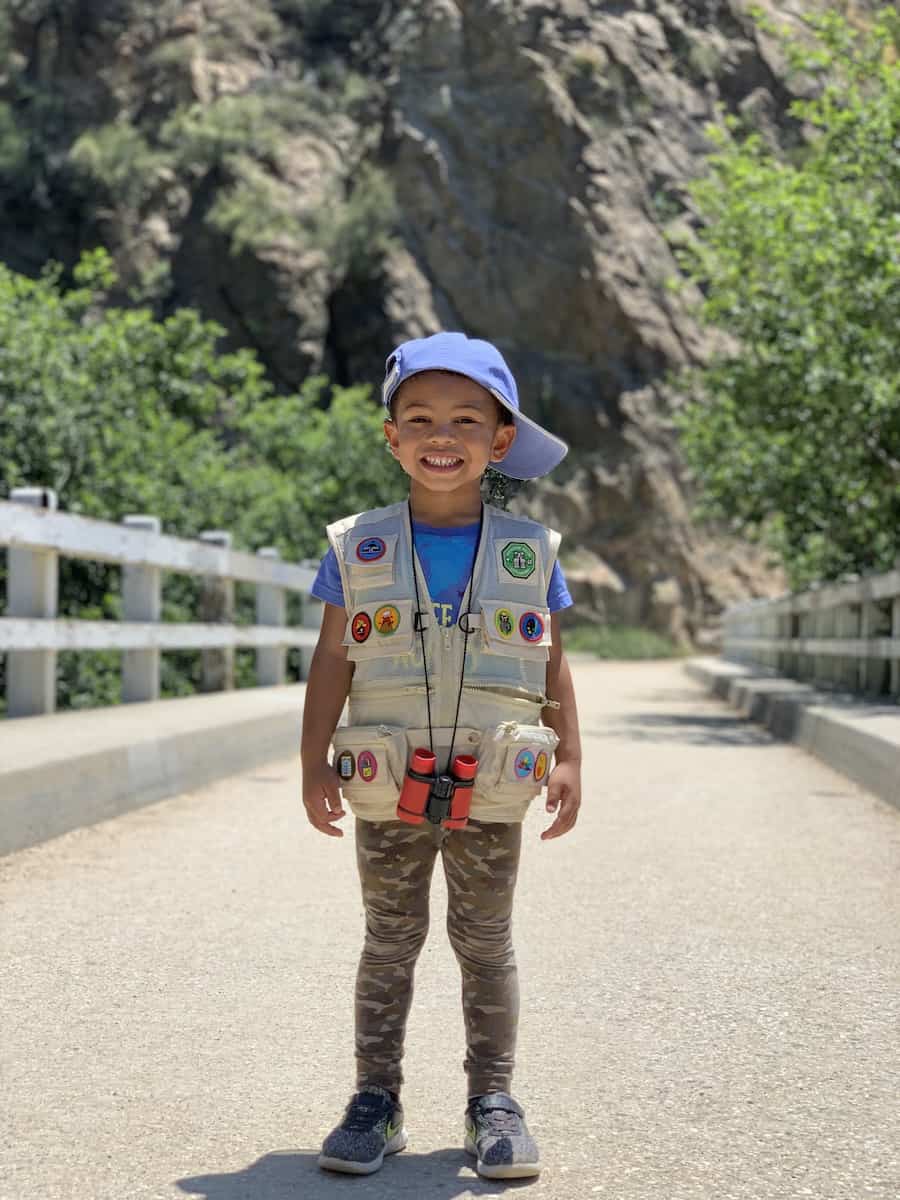
Use your nature manners to love Mother Earth
As Earth Day approaches, families will have opportunities to talk about nature and how to protect our planet. A great way to underscore nature manners is to repurpose items found during hikes and beach days into art. Known as process art, kids can creatively make unstructured art projects like sculptures and collages using bottle caps, straws, and other commonly discarded items. Shore Collections Art has some really creative and inspiring ways to think artistically about the impact our individual actions have on Mother Earth.
Connect with Wonder Club Explorers
If you’re looking for other fun ways to connect with your kids and nature, Wonder Club Explorers might be for you. A fun scouting alternative, Wonder Club Explorers offers merit patches and adventure vests to inspire wonder and curiosity in kids. Open-ended and self-guided, kids earn patches such as “Nature Explorer,” “Process Artists,” and “Good SamariKids.” These are just a few patches that can be earned by practicing good “nature manners” like the ones above.
Have fun exploring and remember to tag #runwildmychild on your next outdoor adventure. Until next time!
What nature manners are you teaching your kids?

About the author
Michelle spends her days working on projects to improve the quality of life for the citizens of her community and her nights reading books to her 6 year-old about every kind of dinosaur there ever was (there are 900 validated species, in case you’re wondering). Together with her son, Michelle created Wonder Club Explorers, a company to inspire wonder and curiosity in kids. She carves out time for herself on the weekends as an early morning exerciser and metalsmith of fine jewelry. She resides in Altadena with her husband and son amongst California Oak trees and a stone’s throw of the San Gabriel Mountains.
You can find Michelle online in the following locations:
Instagram: @wonderclubexplorers
Website: www.wonderclubexplorers.co
RWMC posts: Michelle Garrett
Comments
4 responses to “Outdoor Etiquette & Nature Manners for Kids”
We have a book buddies group that meets every week to read books in the woods. We meet at different nature/ wooded areas around our city. The kids can explore and then we read books together. What are your thoughts on kids bending and hanging on very young trees, ripping small branches off small trees and such? I don’t allow my boys to do those things as I teach them that each thriving tree is a living thing. I cringe when I see kids pull branches off a small tree or rip the bark off them. Would you say something? What would you say?
Ouch! For my child and his friends, we definitely encourage them to respect nature and that includes not harming them in any way- whether that’s hanging on fragile limbs, damaging roots, or trying to carve into a tree.
Instead, if they find a stick on the ground, I’m all for allowing them to play with that, write their name in the dirt with it, really anything to divert their bundles of energy away from destroying a living thing.
I think nature is meant to be used and if a branch breaks while playing that’s ok. But purposely breaking large parts of the tree off should be stopped. I would allow breaking off small branches or bark bits
I don’t agree with most of these. Obviously you should teach kids not to litter or put chemicals in the environment with spray paint but most of these widen the gap between people and nature. Kids should view nature as theirs and be free to trample plants, pick flowers, tear up leaves, skip rocks, break off bark, and eat safe plants to their hearts content. And chasing animals and feeding birds and other safe animals is a part of childhood and learning about the world. It inspires wonder. There’s a smart way to do it such as learning about what is safe.

Leave a Reply